Reply To:
Name - Reply Comment
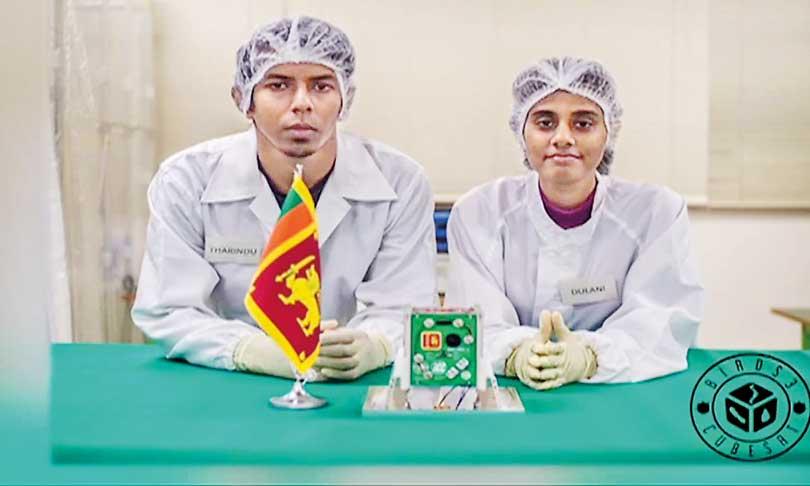
 The world is very keen on adventuring into Space and innovating inventions to fly into space. Although, it sounds alien to Sri Lanka, it would be no longer something strange to Sri Lankans as the islanders’ first research satellite RAAVANA-1 built by two Sri Lankan youth is set to launch into space this April, marking our entrance into the space age.
The world is very keen on adventuring into Space and innovating inventions to fly into space. Although, it sounds alien to Sri Lanka, it would be no longer something strange to Sri Lankans as the islanders’ first research satellite RAAVANA-1 built by two Sri Lankan youth is set to launch into space this April, marking our entrance into the space age.
RAAVANA-1, which is a cube-seized miniature satellite, was built by Tharindu Dayarathne an Electrical and Electronics engineer of the University of Peradeniya and Research engineer at the Arthur. C. Clarke Institute for Modern Technologies along with Dulani Chamika, a Mechatronics engineer from the same institute.
Arthur C. Clarke Institute for Modern Technologies is the only institute in Sri Lanka, dealing in the area of ‘Space Technology’.
This project is carried out under the third Joint Global Multi-Nation Birds Satellite project acronym as “Birds project” which is a cross-border interdisciplinary satellite project for non-space faring countries supported by Japan.
He said that Panawennage had taken the bold decisions and justified the requirement of capacity development of Sri Lankan engineers of the institute through Government support and approvals
BIRDS-3 provided the assistance to build Sri Lanka’s and Nepal’s first satellite while improving the standardised bus system for future missions and give continuity to previous missions from BIRDS-1 and BIRDS-2.
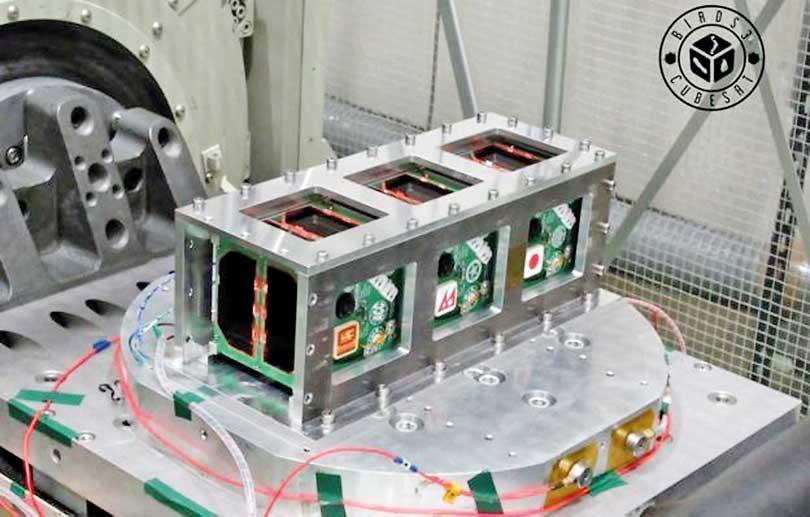
Raavana-1 is a cube satellite, belonging to the Nano satellite category (cube standard) which has a dimension of 10cmX10cmX10cm.
Due to its dimension limitation, the capabilities are limited when comparing to Micro satellite or Small satellite. But the technology is new to the world and with several Nano satellites, in the same orbit and in adjacent orbits (It is called a cluster of satellites), the similar capability of a micro satellite level (similar payload outputs) can be achieved.
The main usage of Nano satellites is for space research activities. Any device or product which needs space environment testing (ex. temperature conditions, radiation, orientations etc.) is sent to the space using a Nano satellite spacecraft.
The satellite which was designed and built in Kyushu Institute of Technology, Japan, is 1000 cubic centimeters in size and weighs 1.1 kg.
This is an indigenous space programme led by Kyushu Institute of Technology.
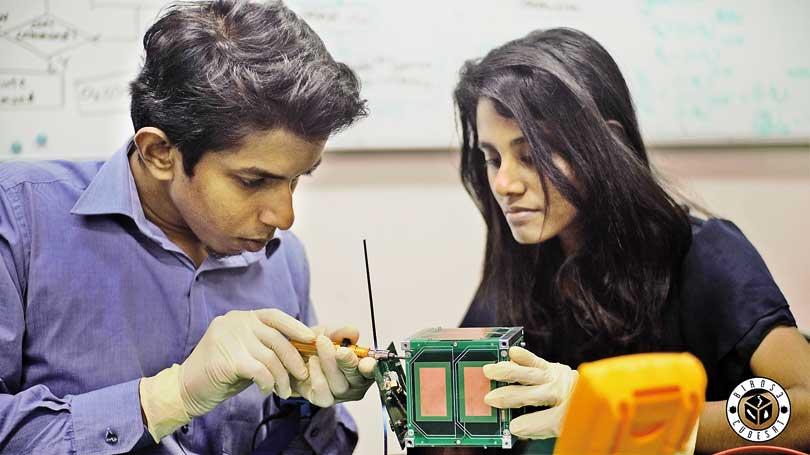
The RAAVANA-1 was officially handed over to the Japan Aerospace Exploration Agency on February 18, 2019 and would later be sent to the International Space Station on April 17, this year. It would be in operation by June 2019.
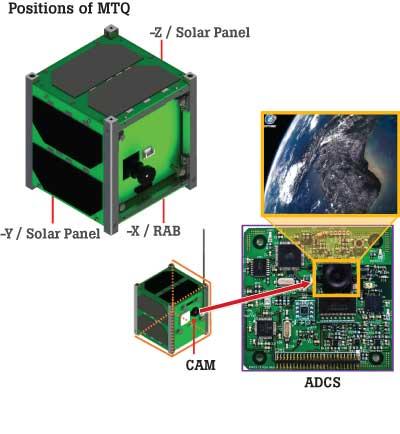 This will be carried to International Space Station via Rocket Cygnus-1 and later deployed from a Japanese robot arm called Kibo.
This will be carried to International Space Station via Rocket Cygnus-1 and later deployed from a Japanese robot arm called Kibo.
The RAAVANA-1 is expected to obit 400 kilometers away from the earth and the minimum lifespan of RAAVANA-1 is one and half years but it is believed to would be active for a period of up to five years.
This project was initiated in 2017 and the duration of the project was two years, where the satellite was expected to start its operation, while acquiring post graduate qualifications for the two engineers in the space craft (satellites) development discipline.
Speaking to Daily Mirror, Director Communication Engineering at Arthur C. Clarke Institute Mevinu Jayawardena said that the idea for the development of Sri Lanka’s first Cube satellite using our engineers was proposed by former chairman of Arthur C. Clarke Institute Prof. Kemal Deen and Former Director General Engineer Sanath Panawennage.
“The necessary Government approvals granting setup was supported by then Minister of Science Technology and Research Mr. Susil Premjayanth and the then Secretary of the ministry Mr. Udaya Senaviratne,” Jayawardena said.
“The space technology programme for further developments in future is being continuously supported by the current minister Mr. Sujeewa Senasinghe and the ministry secretary Mr. Chinthaka Lokuhetti and the chairman Prof. Upul Sonnadara,” he added.
He said that Panawennage had taken the bold decisions and justified the requirement of capacity development of Sri Lankan engineers of the institute through Government support and approvals, because a country’s development can only be achieved through technology acquisition.
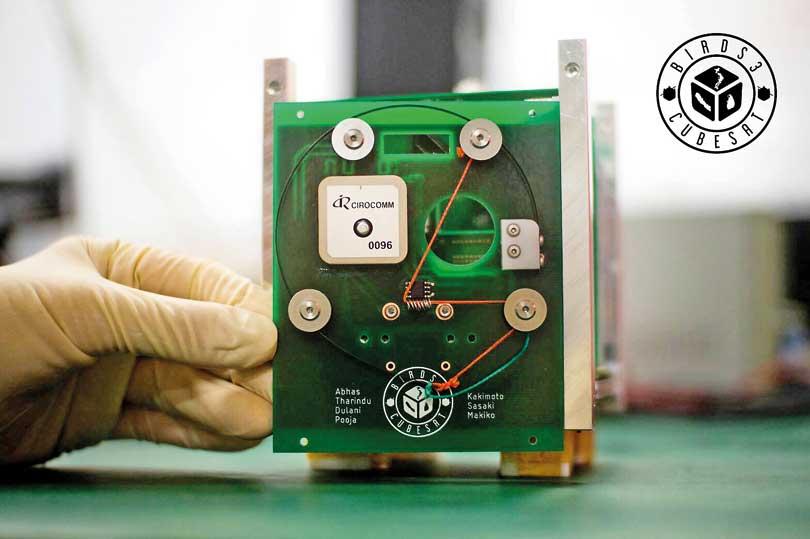
Tharindu Dayarathne said his role in RAAVANA-1 basically was a communication subsystem.
The primary goal of the communication subsystem is to provide a link to relay data findings and send commands to and from the CubeSat. Telemetry and command subsystems will ensure continuous communication between the ground station and the CubeSat after ejection from a Rocket Launch for International Student Satellites (ARLISS) rocket.
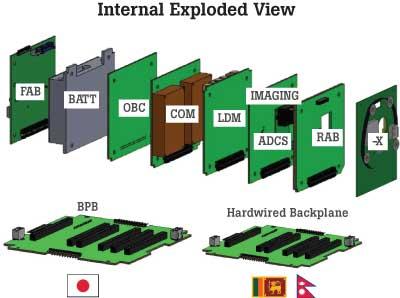 “This project is very interesting to me. I was faced with problems when I was engaged in this project. However, I successfully overcame them,” Tharindu Dayarathne said.
“This project is very interesting to me. I was faced with problems when I was engaged in this project. However, I successfully overcame them,” Tharindu Dayarathne said.
He said the main objective of this project was to learn something and bring honour and fame to the country by making the satellite.
Meanwhile, Dulani Chamika said her role in the project was the Attitude Determination and Control Subsystem (ADCS) which is basically used to change the attitude (orientation) of the spacecraft.
Any device or product which needs space environment testing (ex. temperature conditions, radiation, orientations etc.) is sent to the space using a Nano satellite spacecraft
“Studying about Space was a dream for me. I am very happy that I have got the opportunity to study about Space and make innovation “I learned a lot about space engineering, electronics and even programming through this project. I hope that this project would be a success,” Dulani Chamika said.
In conclusion, it is praiseworthy that efforts were taken by these two Sri Lankan youth who went through all the hardships in recording this massive victory. Thus, it is fitting to be thankful and grateful for them as they bring honour to our island. Let’s wish them for their future endeavours, so that they would do wonders and would provide a boost to others to follow on the same path.